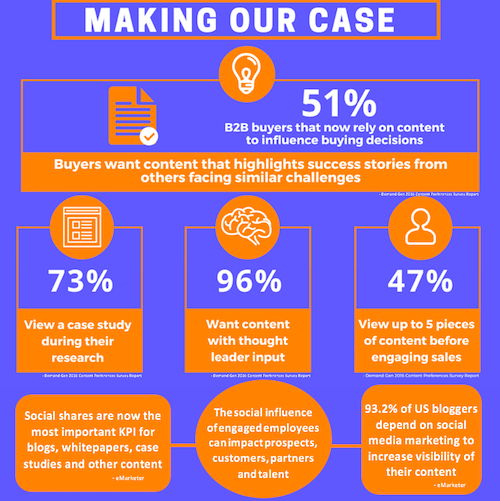It's 11 O'clock, do you know where your influencers are?
By Mostafa Razzak
For communications and marketing to be effective, messages must not only reach the right people, but also resonate across various channels to impact opinions through engagement and advocacy.
“Influencer Communications,” or “Influencer Engagement” is more than just a catchy term; it’s the new and improved formula that combines next-generation marketing mediums with traditional methods, and applies them to and through purchasing influencers of various types. From analysts and media to customers and partners, the types of influencers — and ways in which they’re engaged — vary, and are what make this method unique.
Types of Influence
Perhaps the easiest influencer type to relate to, is simply an expansion of what most people think of when they consider traditional marketing. A target is defined and marketing is done to impact that target. However, we realize today that targets aren’t just the people holding the purse strings. Rather, this aspect of Influencer Communications is a 360-degree approach in which any influencer of a purchasing decision is targeted with messaging that will resonate with their specific needs.
Another aspect of Influencer Communications is marketing done through influencers. The old school version of marketing typically sought only the participation of sales and marketing personnel. However, there are many other people and departments within your organization that have the ability to positively influence customers and help lower the fruit.
It’s nothing short of mind-boggling how many organizations don’t recognize the importance of their in-house influencer community – employees – and as such fail to execute effective campaigns.
Due to their relationships and social media connections to potential customers, your executives, business development team, IT, and even the HR department should be part of a marketing and PR campaign (along with sales and marketing, of course). If you as an executive have hired the right staff, then the people whose day-to-day efforts drive your company’s operations should be connected to your target audience.
Also, it goes without saying that customers can – and should become influencers by championing your products or services.
Putting Influencer Marketing to Practice
Personal referrals possess an inherent credibility that make them the most impactful influence on our decision-making. Influencer engagement is accomplished many ways, but one of the most effective is through virtual word of mouth — or “shares” — via social media. A customer success story in the Wall Street Journal is great, but with so many new media platforms from which people now consume news and information, there’s no guarantee that the person to whom you most want to present that information will actually see it. We see this today as content assets (case studies, news coverage, white papers, photos, videos, etc.) are shared across many different online platforms.
Rather than blindly accepting the marketing messages of companies, today’s consumers are more discerning and more likely to accept the recommendations, shares, likes, and reviews of others.
We see one version of this play out today in retail where social commerce is revolutionizing the industry. Clothing manufacturers have implemented visual commerce systems that incorporate and enable customers to share photos of the clothing. CMOs can track many different aspects of these shares to gain insight into customer behavior and also see which photos are most influential, leading to new sales.
However, don’t assume that this method of marketing is as simple as your entire company blindly sharing links on social media. Rather, a measurable approach is best. In fact, due to the online nature of this marketing, KPIs such as social shares can be easily monitored, measured, and used to make adjustments to improve engagement and traction. We can take those marketing assets and truly understand which are resonating the most. While there’s sure to be some trial and error initially, Influencer Communications are anything but random.
It’s this measurability that allowed Hubspot to unequivocally ascertain that LinkedIn has become an essential medium of B2B marketing. Hubspot found that traffic from LinkedIn generated the highest visitor-to-lead conversion rate at 2.74 percent, almost three times (277 percent) higher than Twitter (.69 percent) and Facebook (77 percent).
While LinkedIn has its merits, don’t be fooled into thinking other mediums aren’t worth pursuing. On the contrary, Influencer Communications and engagement must reach potential customers via every method/channel you can access.
What good is a case study if your potential customers don’t see it, or if your business development and sales team don’t see it or use it effectively?
As I mentioned in the beginning of this article, for communications and marketing to be effective, messages must not only reach, engage, and convert influencers, but also resonate across multiple channels to impact perception and opinions, and create positive, lasting impressions.
Under such a campaign, the role of marketing expands to not just developing and implementing materials for an external push, but to ensure internal needs are addressed as well. For instance, if online assets such as white papers, case studies, blogs, analyst coverage, etc. are going to be developed for your company, it’s imperative that all potential influencers within the company 1) know these assets exist; 2) are empowered and maybe even incentivized to share the content with their contacts; and 3) have access to tools that give them the ability to share easily and quickly.
Don’t Wait to Begin
The influencers you already have as part of your organization are ready to begin helping your sales and marketing team. All that remains is for you to have assets worth sharing and to develop a plan to get those influencers engaged and helping your cause.
At the same time, the opportunity has never been bigger to begin engaging with those external influencers. Depending on your products, there are most likely many potential influencers that can be leveraged right now. Considering this type of marketing is relatively new, the chances are good that most of your competitors are missing this opportunity, leaving a blue ocean open to you.
